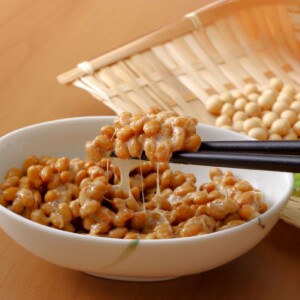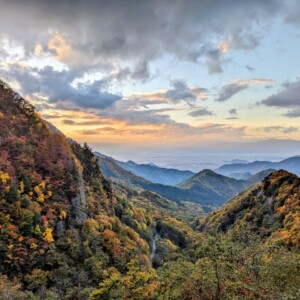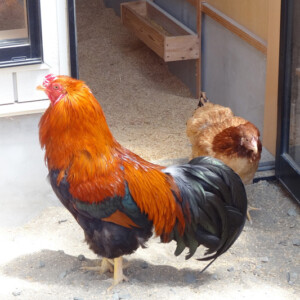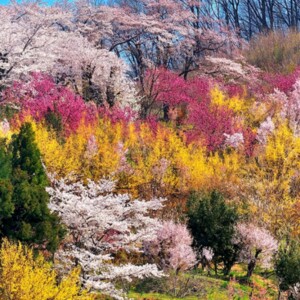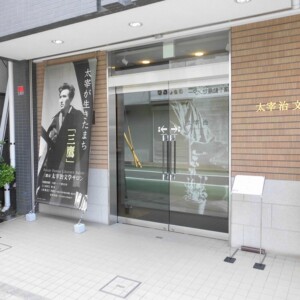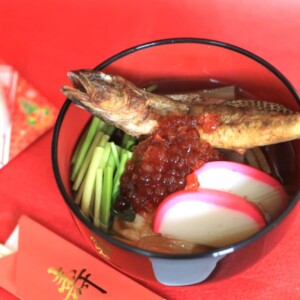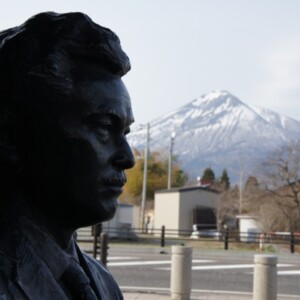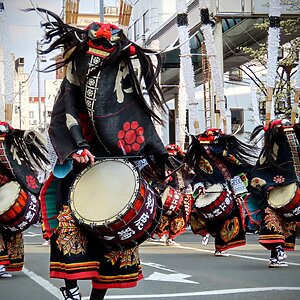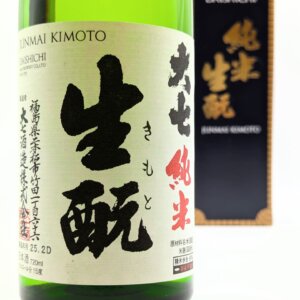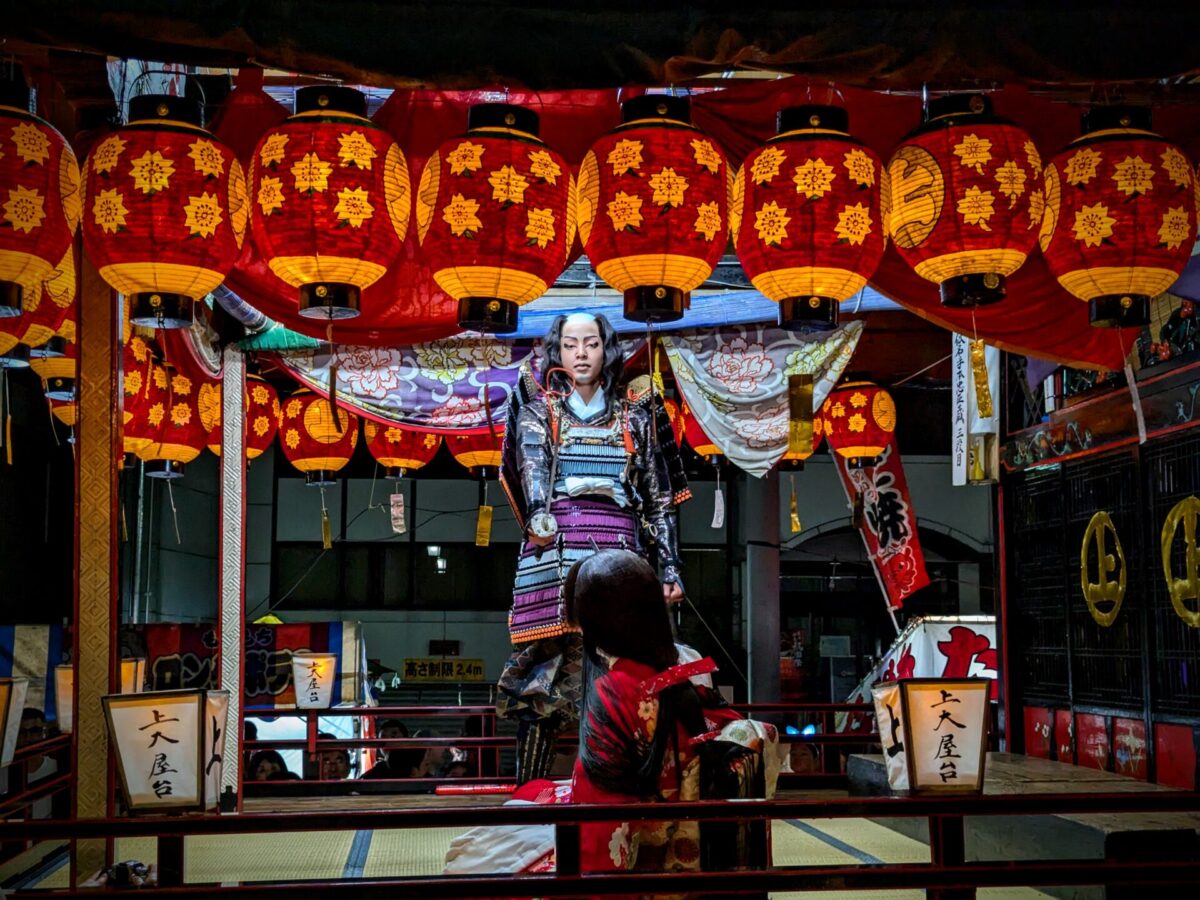
[Aizu Tajima Gion Festival Photo Report: Part 1] Kabuki Kabuki performances at the Great Hoods of the Night Festival [Minami Aizu Town, Fukushima Prefecture]
table of contents
- 1 July 22nd: Regular Festival (Evening Festival)
- 1.1 When you arrive at Tajima, you first visit Tade Uga Shrine.
- 1.2 Go to the main street of the festival where the kabuki food stall is operated
- 1.3 Kunigon Sake Brewery provides guidance and cooperation in the creation of doburoku served at festivals
- 1.4 Kabuki performances that begin with a food stall
Minamiaizu Town is located in the southwest part of Fukushima Prefecture, just a little southerly, in Tochigi Prefecture. in this area, also known as "Okuaizu" one of Japan's three major Gion festivals is held every year?
In this article, we will be bringing you regular festival (Yunyo Festival) of Aizu Tajima Gion
July 22nd : Regular Festival (Evening Festival)
The Aizu-Tajima Gion Festival is said to have originated around 1185 during the Kamakura period, when the lord Naganuma Munemasa worshiped the Gion god as the god of Gion as the god of castle protection, and the Gion festival was held along with the festival at Tade Uga Shrine, the guardian of Tajima.
It has long been known as "Gion Shrine in the West, Nakatsushima Shrine, and East Tade Uga Shrine." For more information, please see the following article.
The festival takes place for three days from July 22nd to 24th each year, and the main festival is the 23rd, Chunichi.
When you arrive at Tajima, you first visit Tade Uga Shrine.
We arrived in Tajima after 5pm on the 22nd. The festival itself starts at 10am, but the main performance of the day, the great stall, kabuki performance, is held from the evening to the evening, so you can watch it even from this time.
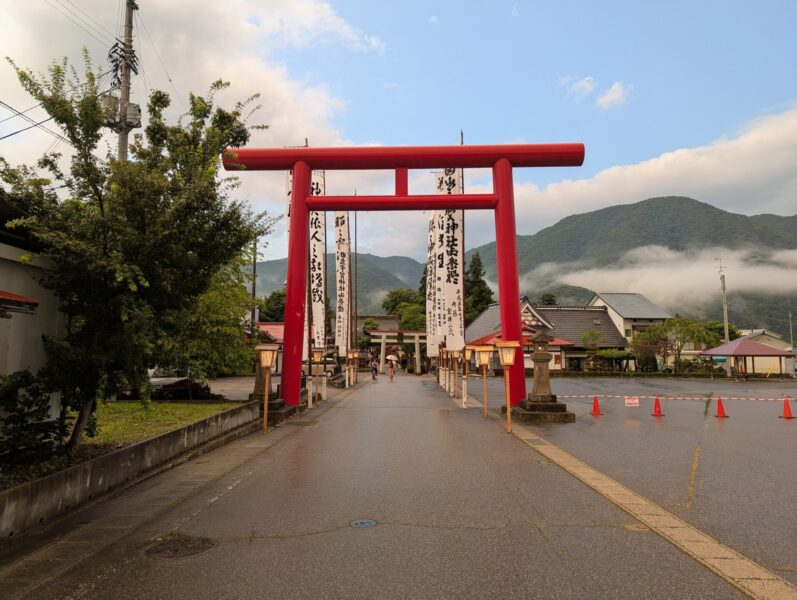
First, we visited Tade Uga Shrine, the setting for tomorrow's main festival.
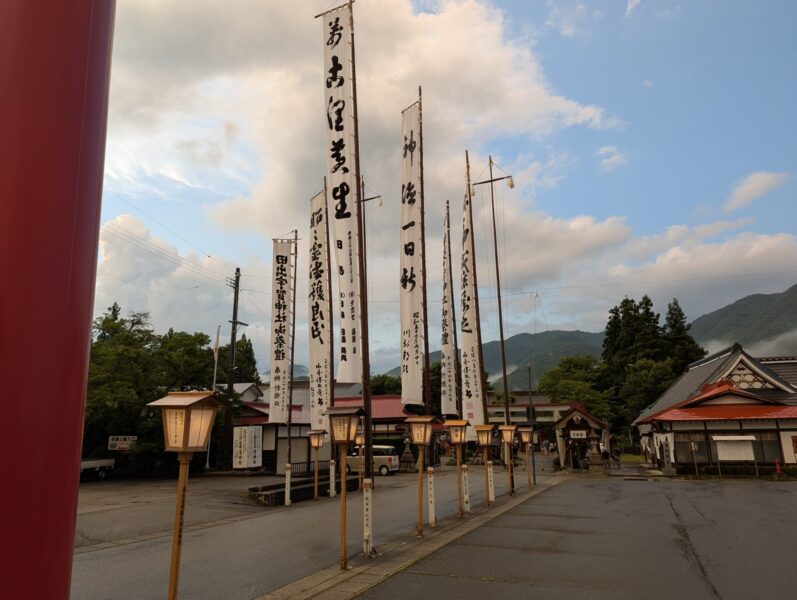
At dusk, the dimly lit lanterns and the Oku-Aizu mountains shrouded in thin clouds create a fantastical atmosphere at Tadeuga Shrine.
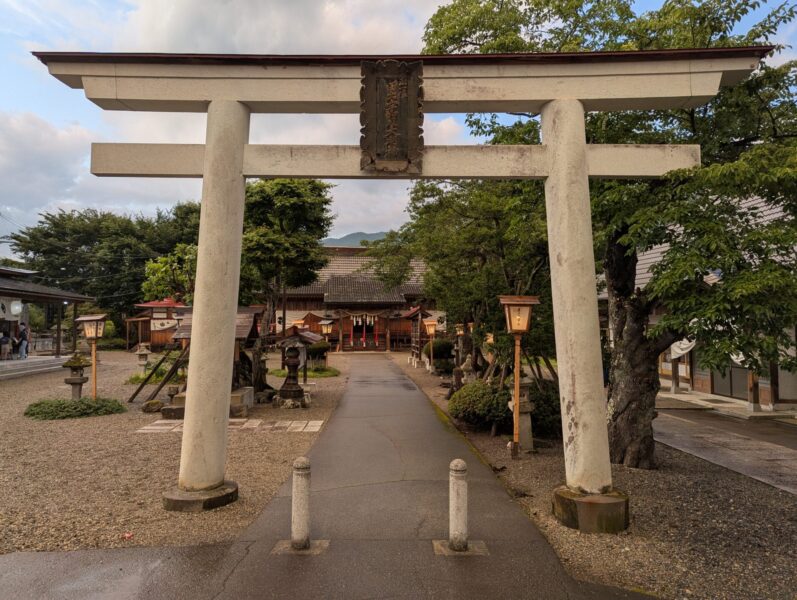
The main deity of Tadeuga Shrine is Tadeuga Daimyojin , who is said to have suddenly appeared from a small island in the middle of a rice field long ago and has since been enshrined as the guardian deity of the area.
that from that day onwards, the town, which had previously been called Hinomachi, changed its name to "Tajima."
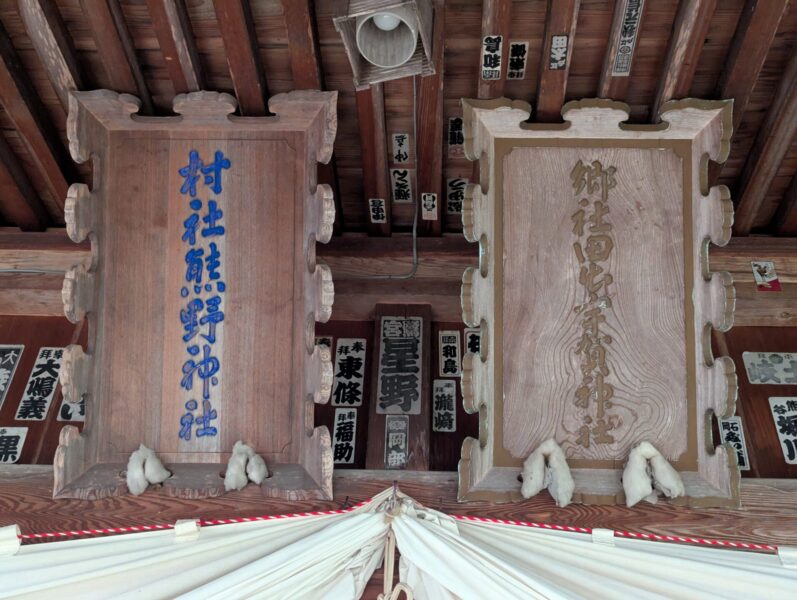
The Aizu-Tajima Gion Festival used to be called the "Tenno Festival" and was held on June 15th, but since the Meiji period, it has been held together with the festival of Kumano Shrine, which is enshrined in the neighboring area, on the same day as the Gion Festival of Tadeuga Shrine.
So, to be precise, it is a festival of two shrines: Tadeuga Shrine and Kumano Shrine.
Tade Uga Shrine <Information>
- Name: Tade Uga Shrine
- Address: 629 Miyamoto Ko, Tajima, Minamiaizu-cho, Minamiaizu-gun, Fukushima Prefecture, 967-0004
- Phone number: 0241-62-0460
- Official URL: Fukushima Prefecture Official Website – Tade Uga Shrine
Google Map
Go to the main street of the festival where the kabuki food stall is operated
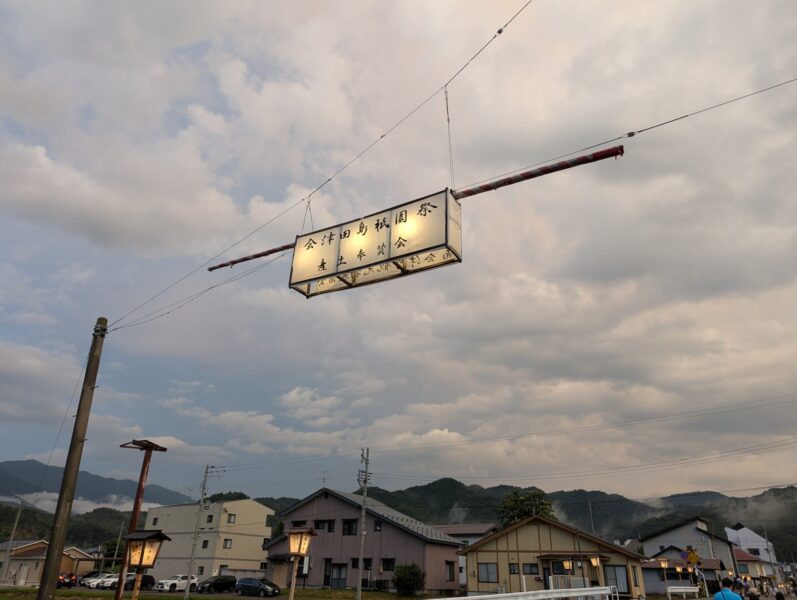
After the shrine has finished, we head to the center of Nanadari Street, which Incidentally, this street is also a road through which the seven-liner procession passes the next day.
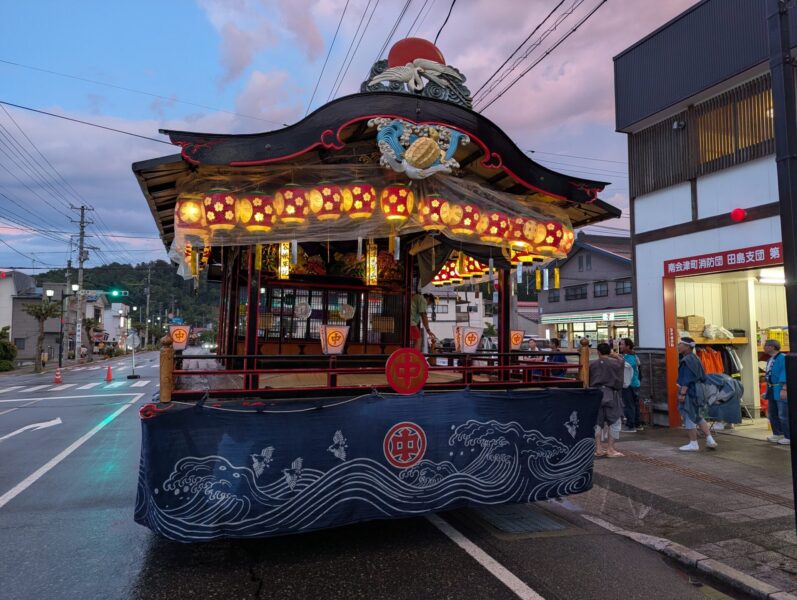
During this period, National Route 121, Tajima's main road, will be closed to traffic only in the central shopping district around Aizu-Tajima Station, the main festival venue.
As we entered this main street, the first thing that caught our eye was Naka Yatai, one of the large floats. They were in the middle of preparing for the next performance.
There are four main floats in total, called the West Float, the Upper Float, the Middle Float, and the Main Float.
The kabuki performances vary from float to float, and pamphlets about the shows being performed are distributed at the tourist information center located near Aizu-Tajima Station, so you can find out information such as "what will be performed at which float and at what time" in the pamphlets.
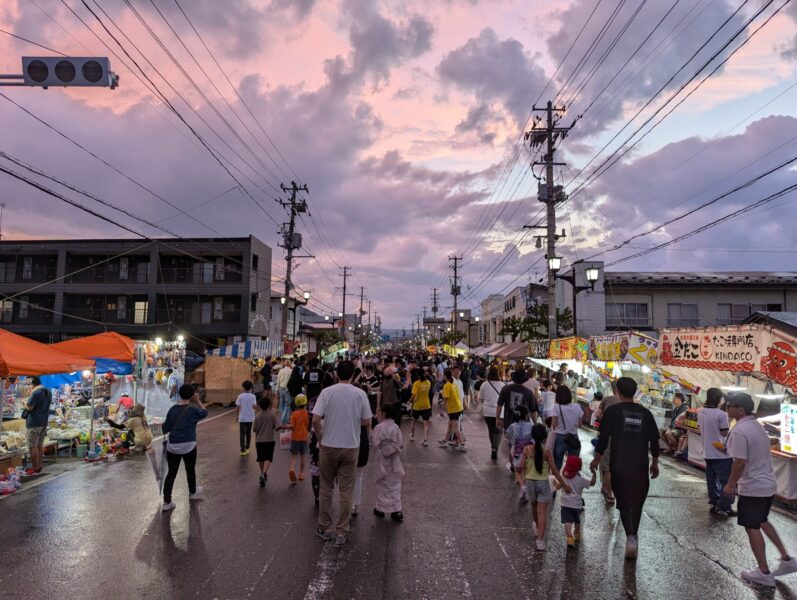
As the sun sets, more and more people gather on the streets.
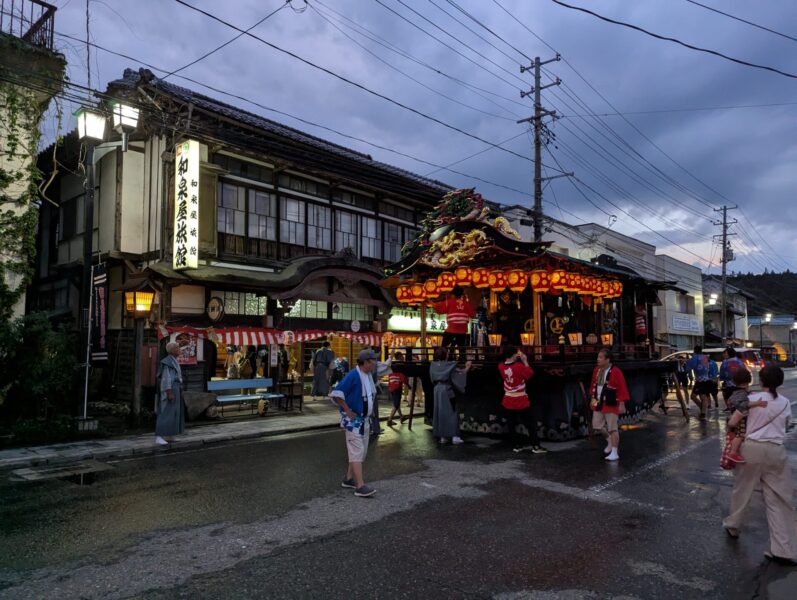
Izumiya Ryokan is a registered tangible cultural property of Japan . After the war, it was designated as an inn by the occupying forces, so it still has Western-style rooms and English signs inside. By the way, it doesn't have air conditioning, so it might take some courage to stay there in the summer.
The one parked in front is the "top stall," one of the large stalls.
Izumiya Ryokan <Information>
- Name: Izumiya Ryokan
- Address: 4047 Tajimakamicho, Minamiaizu-cho, Minamiaizu-gun, Fukushima Prefecture, 967-0004
- Phone number: 0241-62-0048
- Official URL: Fukushima Tourism Information Site "Fukushima Journey" - Izumiya Ryokan
Google Map
Kunigon Sake Brewery provides guidance and cooperation in the creation of doburoku served at festivals

At the Aizu-Tajima Gion Festival, Tadeuga Shrine has been granted a sake brewing license sake brewery, Kokken Sake Brewery.
This sake is served not only to festival-related people but also to visitors, so the Aizu-Tajima Gion Festival is also known as the Doburoku Festival
Kokugon Shuzo <Information>
- Name: Kunigon Sake Brewery
- Address: 4037 Ko, Tajimakamicho, Minamiaizu-cho, Minamiaizu-gun, Fukushima Prefecture, 967-0004
- Phone number: 0241-62-0036
- Official URL: Kokugon Shuzo Official Website
Google Map
Kabuki performances that begin with a food stall
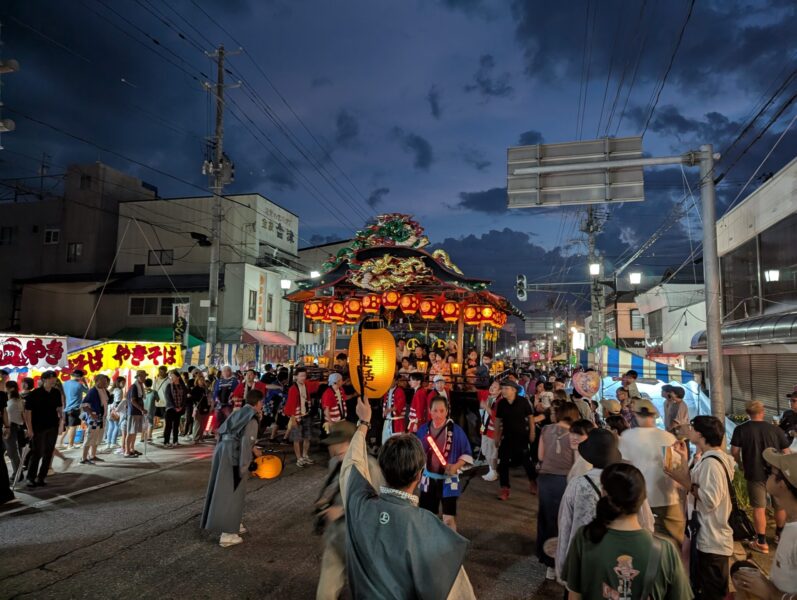
The four food stalls are carried by adults, carrying many children, and the food stalls are stopped at a place called the "geiho" and kabuki performances are performed. Each performance is divided into seven parts, and the performances are performed in order as they arrive at the artifacts.
By the way, while the float is being pulled around, the children on the floats "Osan! Yarekakero!" , which apparently means something like, "Come on, guys, run hard!" It's probably a traditional thing, but it's quite exciting. Lol
If the chant is slow, it will be slow, and if it is fast, it will be led around the food stalls early. Children talk faster and faster as their excitement rises, so it seemed like it was quite difficult for adults who were running around the food stalls.
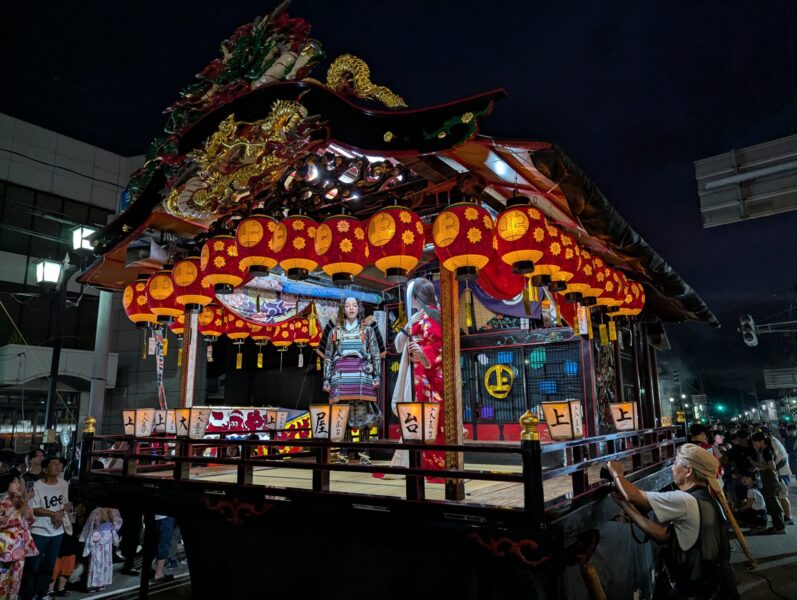
Once the children arrive at the Geijo and get down from the food stall, the kabuki performance finally begins. The photo shows the kabuki food stalls performed at the top of the roof, and the performance is Ichinotani Futabagunki .
Children's Kabuki was originally performed at the Gion Festival from the Edo period through the early Meiji period, but was abolished with the promulgation of the "School System" in 1872 (Meiji 5) on the grounds that it was "not educationally desirable."
in 1994 for the first time in about 120 years and continues to this day.
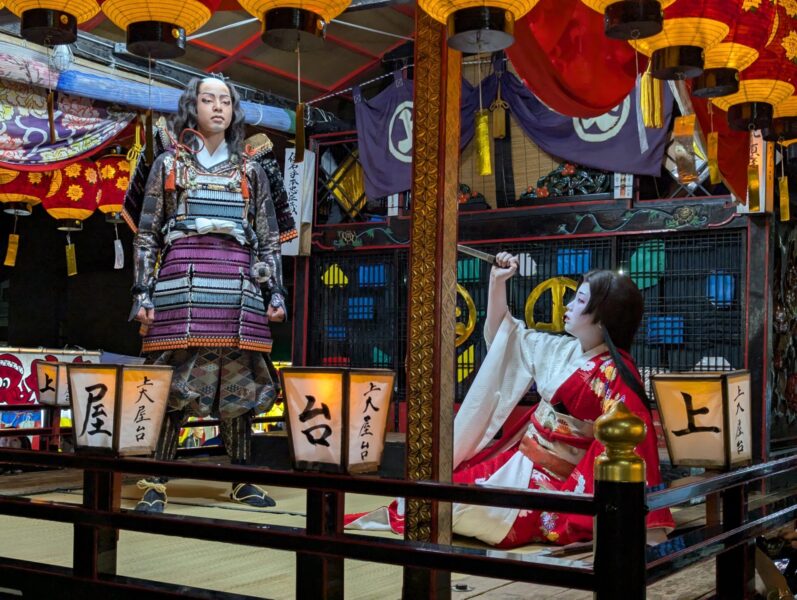
Due to time constraints, it was hard to see all the food stalls performances, but even though it is a child's kabuki, his acting skills are comparable to that of adults. I was a little surprised at the more authentic kabuki performance than I imagined.
After that, we couldn't find a place to stay in town, so we headed back to a ryokan inn in Yunokami Onsen. The only thing I regret is that we couldn't drink alcohol because we had to drive, even though we were surrounded by the most amazing festival atmosphere... To be continued on day two!




![[Aizu Tajima Gion Festival Photo Report: Part 2] Seven-lined procession, also known as Japan's number one bride procession [Minami Aizu Town, Fukushima Prefecture] 2025.07.22 Aizu Tajima Gion Festival_Japan's No. 1 Bride Procession](https://jp.neft.asia/wp-content/uploads/2025/07/IMG_38592-150x150.jpg)
![Okuaizu Shoten is born where you can "know, buy, and experience" Okuaizu! [Fukushima Prefecture] Okuaizu store](https://jp.neft.asia/wp-content/uploads/2024/07/sub6-150x150.jpg)
![Maezawa Koya Village, a Japanese original landscape that remains with many traditional "masters" [Minamiaizu Town, Fukushima Prefecture] 1618401_m](https://jp.neft.asia/wp-content/uploads/2022/06/1618401_m-150x150.jpg)
![The Aizu Tajima Gion Festival is famous for Japan's number one bride line [Minami Aizu Town, Fukushima Prefecture] Aizu Tajima Gion Festival](https://jp.neft.asia/wp-content/uploads/2022/10/1_ccc5e365-9269-483b-b9a4-f53bf9d88c81-x2.jpg-150x150.webp)
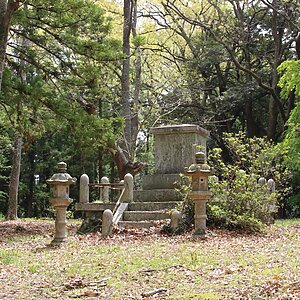
![Koriyama brand vegetables [Green Sweet]](https://jp.neft.asia/wp-content/uploads/2024/09/IMG_8104-300x300.jpg)
